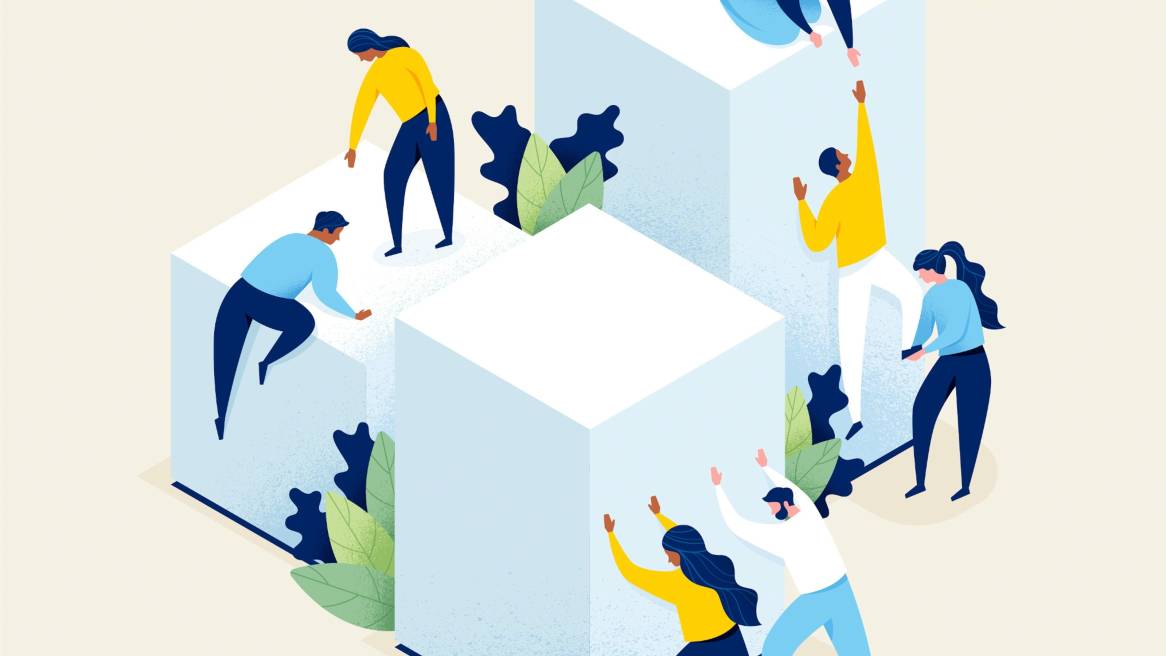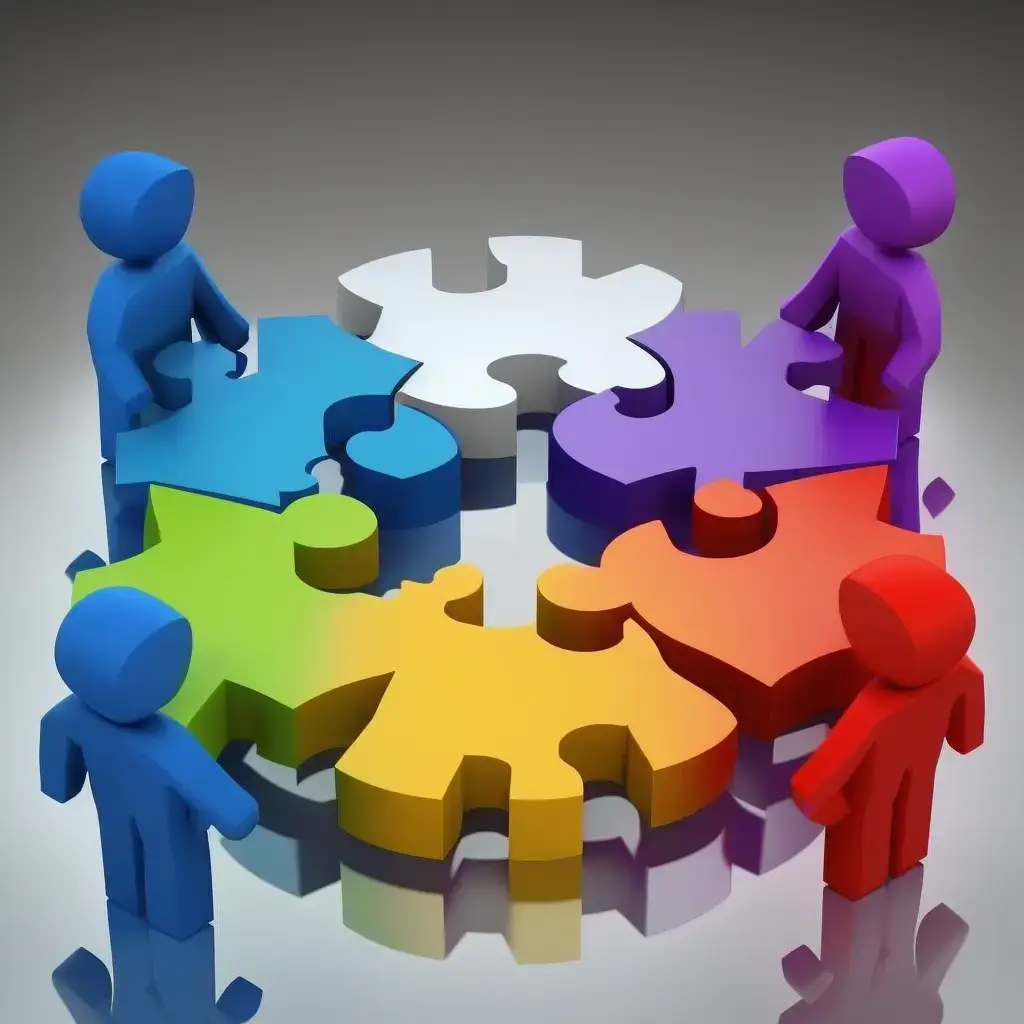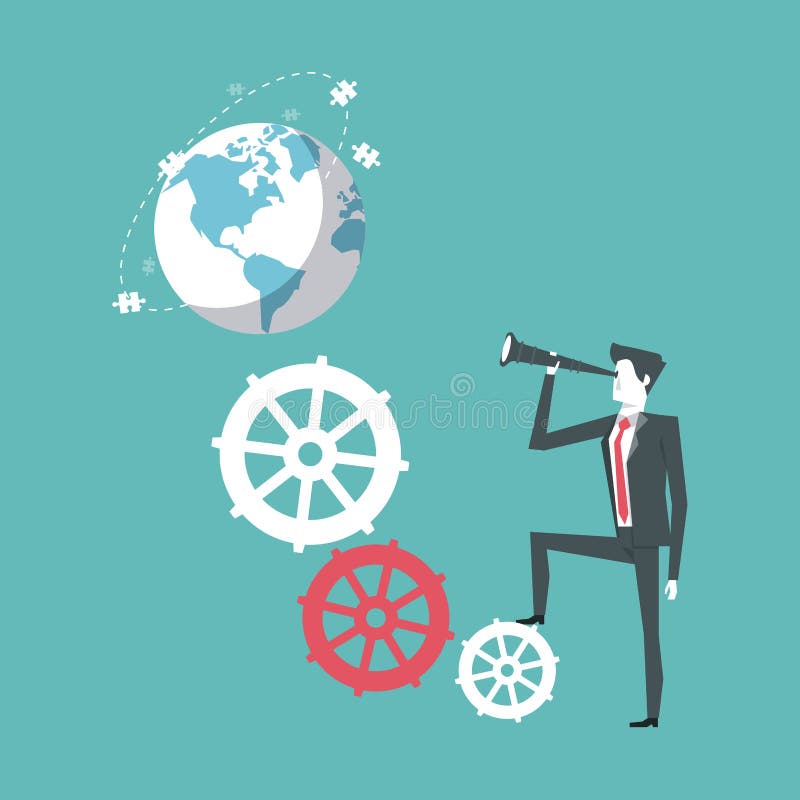 |
| Figure 2 |
 |
| Figure 3 |
| Figure 5 |
by : Richway Carolin Dishaaline (PG43492)
 |
| Figure 2 |
 |
| Figure 3 |
| Figure 5 |
Leadership and Management are different thing, and it shouldn’t be used interchangeably. Both imply a unique set of skills, characteristics and functions that share few similarities.
| Figure 1 |
EFFECTIVE TRAITS OF A LEADER
Trait theory exposes the idea that people are born with inherited traits. The Trait Theory of leadership is based on specific characteristics of many leaders. This method is mainly considered when predicting leadership effectiveness. Many theorists who study leadership traits have identified characteristics include physiological, demographic, personality, intellectual, task related, and social. As an effective leader in any organization, the leader should have ,
As per “Von Clausewitz” reference, he calls strategy, "a system of thought more than anything else".
.jpg) |
| Figure 2 |
While implementing the change the organization's leaders of top management level identify what is the decisive point. Generally in companies, the decisive point is a central idea that directs the entire organization towards winning the conflict. Therefore, most of time organizations ensure to complete for advantage, which is creating greater value for their customers that the competitors can do. Companies emphasize the fact that everything an organization, needs to do is to focus the whole of its resources and the minds and hearts of its employee on that decisive point, which underlying thing that drives success.
Strategic leadership is the process of providing the direction and inspiration necessary create a sustain an organization. In companies, while implementing the new changes, leader should have the ultimate management responsibilities regarding new change and directly reports to board of directors and appoints relevant managers those who requires running the change in the organization.
In an organizations, to become a good communicator, middle level managers understand the criticality of all employees, which mean they value that each employee driving for the company, the niche skills sets that they possess which are critical to the organization regular functioning. Once they understood, they ensured to categorize each employee working in the respective organization's department from highly critical to not so critical. This analysis is extremely important.
The change agent in companies who identifies key members from the organization called as change managers, and they are the front line messengers of the change but before they do that, the change leaders in companies convinced the managers of their vision of the change. Change manager team in any company also ensured that they had communication to each employee teams to understand their fears. This part is where the analysis of critical to not so critical employee comes in play. Because by having conversation to a very critical employees, the manager ensured with them that they have the place in the future of company along with the clear career development path.
A role of an Agile leader is takes on board the concerns, the questions raised suggestions from team members. Agile leader is about bringing together the world of project management and change management leading to the realization of benefits. In an organization project management is concerned is a key driver and change management is important for agile organizations.
.jpg) |
| Figure 3 |
Organizations also believe that agility needs to invest in a strong change management capability with co-creative collaborative sense where it can build buy-in, help employees to understand, and manages the capacity of change so that employees of the organization are not overwhelmed and understand that this is a small continuous adaptation. Therefore, building internal capability is essential and investing in good human centric in change management, building expectations within the organization important as well.
ADVANTAGES OF HAVING LEADERSHIP IN ORGANIZATION
| Figure 4 |
Collaboration creates robust solutions for complicated problems by utilizing multiple perspectives, experiences, attitudes, and idea the team can most often find healthy ideas with limited downsides by working together.
Employee engagement is high. The participate nature of leadership creates more positive environment where team members are included. They work together to achieve the organization’s goals and feel that their opinion matter which build trust and respect among the members which make the work environment even better.
Common goals lead to high accountability. A leader involves others in setting the goals and targets of the organization. If people are part of defining the goals, they will feel greater ownership of reaching those goals. This intense feeling of accountability in combination with high empowerment improves productivity.
OBSTACLES OF LEADERSHIP
| Figure 5 |
Resent may creep in a positive work environment needs all team members to be respected and valued. However, some team members ideas and opinions may consistently be better or get more attention than others which may leads to some people believing that they aren’t valued leading to resentment and bitterness.
Collaborative decision – making is a time consuming. Deferring decisions to the team may cause unnecessary delays that increases the problem worsen the consequences or reduce productivity. A good leaders will know when to use collaborative decision making and when to use a quicker approach with fewer individuals or no discussion at all.
Team members can lose trust. After period of leadership team members expect participate leadership and might even consider it mandatory. Therefore, they become confused when the leader makes quick decisions without their input which can lead to uncertainty about when to expect participation.
SUBCULTURE IN ORGANIZATIONS AND STRENGTH IN ORGANIZATIONAL CULTURE
 |
| Figure 1 |
Moreover, such sub-cultures in one business can overlap and conflict with each other. However, Pidgeon (Pidgeon, 1998) also suggested that various subcultures within an organization could develop in a helpful experience; in companies this may begin, for demand, diverse responses, and evaluations in reaction to dangerous circumstances. In sum, it is hard to disagree with the reality of different subcultures in one individual business. However, the most important is to guarantee collaboration between these subcultures. Therefore, many organization's the overall organizational culture understands the subcultures' negative and positive influences to build an integrated solid and effective culture. (Alicia Boisnier, 2003)
Furthermore, the organizational culture, whether there are subcultures or not, should allow the organization to act and change to new adjustments. (Douglas A Wiegmann, 2004) It must be able to create the manners within the organization that lead to its outcomes. In addition, organizational culture should offer a perception of fit in to individuals, contributing to their obligation toward accomplishing the organizational goals and objectives and their social constancy. Therefore, their actions can be successfully formed and produced positively.
However, several circumstances can affect this role of organizational culture. In practice, corporate culture is affected by how the company is organized and how its leaders set it up for a victory. Furthermore, making it a behavioral concern and encouraging team coordination and leadership would impact the culture of any organization. General and social culture is another element impacting organizational culture; certainly, how people behave is clearly connected to society's standards. Therefore, because of the impact of many considerations, some organizational cultures could be deeper than others.
There are several strengths of organizational cultures.
INFORMAL ORGANIZATIONAL CULTURE
 |
| Figure 2 |
The informal organization and the organization’s culture are designed by people throughout the organization rather than being controlled by top management. Informal organization and culture are significant factors in the overall layout of an organization, because of their impact on the performance and implementation of employees. In creating or reshaping an organization, management should constantly take the informal organization and the general culture into account. If the organization’s layout conflicts with its culture, it is doubtful that the plan will be successful. And where the plan particularly tries to discourage, part of the informal organization, destructive conflict may result.
In companies as in general, the leaders won't announce a change suddenly and assume it to get completed. They put in a position to get all the necessary information and activities, they pushed the current situation forward by encouraging and motivating the employees to be keenly cooperative and proactive in taking constructive decisions and approaches. From the people management point of view, appointing staff from different departments of the organization for a project to be more effective as reaching out to their members is effortless and time efficient. The framework is widely open that the project team itself can be the voice of the organization for its open communication. Organizations, when they implemented the change, company invests great effort and resources in developing further capabilities and skills in their employees, from which they benefit during their work at respective companies and which they take with them wherever their career path leads. To this end, organization widely offers their employees and managers enhancement courses such as Excel training, Office training, and English lessons as well to further support the communication between employees and managers, the process includes a self-evaluation by the employee, which allows a more productive and in-depth communication between manager and employee focusing on the employee’s performance.
 |
| Figure 3 |
A change in culture isn’t simple and can do more damage than good if not executed accurately. Leaders need to realize that it is the people of the organization who will implement the change and therefore they need to be on-board that change is essential.
Therefore, leaders at the organizations across the world, ensure that they had communication to each department to understand their fears before implementing new challenges. For Example, After pandemic, there was a massive organizational change in globally. While implementing the change, it was tougher to get everyone on board since majority of employees starts their remote work mode. And lots of companies ensure that not to put their customers in critical situation. Therefore, majority of organizations implemented the required technical solutions, which allowed their representatives globally to be fully connected to all appropriate supporting platforms, as well handling their contact center virtually and successfully maintain their best-in-class service level, and even nowadays their continuing the virtual contacts. Many organizations sustained their adaptation to the “new normal” of operating under the remote work mode system. As part of this change, companies providing employees a hybrid mode of work, working both from home and from the office, in areas where possible.
| Figure 1 |
Organization's Vision and Values are stated in the company’s Code of Ethics and convey company’s responsibility to act reasonably, considering the culture and atmosphere in which the company function, and to endeavor for brilliance in all respective company's activities. Organization strives to liberally connect with its dealers in a polite and good manner. However, company will cease from contracting or end prevailing engagements with dealers and business partners in cases which companies doubts or is aware that they breach their Code. Sustainable procurement promotes suppliers to approve and execute related procedures, agreement plans and work methods to guarantee loyalty to ethics and moral standards set in company code.
TYPES OF ORGANIZATION CULTURE
Completing Values Frameworks developed by Robert Quinn and John Rohrbaugh who were researchers at the university of Michigan. In 1981 they sought to identify criteria for organizational effectiveness. As part of their research, they came up with competing values framework which have two dimensions and then identified four type of cultures which led to Organizational Cultural Assessment Instrument.
The Four different types of organizational cultures are Clan Culture, Adhocracy Culture, Hierarchy Culture and Market Culture.
 |
| Figure 2 |
Organizations generally highlight on authenticity, efficiency, productivity, and compliments to the power of the manager. Members are assessed based on quantifiable output and outcome is always made conclusively.
The Adhocracy in companies (Developmental culture) advocates, spontaneous information managing by vision, creation, and innovation. These are expected to be a means to the end of regeneration like
The Clan Culture of organizations (Consensual cultures) suggest shared information managing by conversation, contribution, and agreement. These are expected to be means to the end of cohesion like,
For example, in any company, change manager’s team ensured that they had communication to each employee teams to understand their fears. This part is where the analysis of critical to not so critical employee comes in play. Because by having conversation to a very critical employees, the manager ensured with them that they have the place in the future of company along with the clear career development path.
Hierarchical culture in organization entitlements, recognized information managing by documentation, monitoring, and evaluation and it is assumed to be the end of endurance which is,
POWER AND POLITICS IN ORGANIZATION
 |
| Figure 1 |
Power is seen by many theorists as a desirable force within organizations. According to George and Jones when one group of people gets another group of person or people to do something perhaps that person would not done the task naturally referred as power.
Politics is another concept use within the organizations to achieve common or person goals and interests. Management or people from a higher position use their power to influence work politics to control decision making. When some people within an organization have power and they may be able to use that power to get other staffs to work in particular ways, where reorganize the business in a certain way or like in develop a new application, whatever it is they have got what they want by virtue of their position because they have power, and they able to manipulate the employers to perform in a way they want by using the power, wielding the power, and getting staff on their side sometimes to agree with them.
Workplace politics is a common activity pursued by employees from a position of power. For example, the use of political behavior to gain promotion.
 |
| Figure 2 |
In Legitimate Power, the top-level leader/ CEO/ Board of Directors in company has authority over all staff underneath them. Each of the leaders at the Middle level/ Superior or senior managers has authority over their individual team. Finally, those at the bottom of the organization like minority employers have no power and no authority over anyone.
Legitimate Power is emphasized by rules and regulations. Implementation new changes in organization, specially designed for employers of the organization. The company CEO ensure that everyone in the organization should understand the necessary change in organization which operates globally, and they ensure to motivate middle level and lower level as well as makes them follow the instruction to work in a desire direction, and ensure to implement the required technical solutions as soon as possible to run the organization effectively.
Expert Power, is the skill of a person has regardless of position to show knowledge in a subject matter or state. Sometimes an employee may have expert power in organization. For example, in company, influencer leader have high authority to affect the obtaining decision of others due to their knowledge or position or connection with their viewers. They actively involve with a different position. Specially in marketing and promoting new services in the organization.
Reward power is a formal power given to an organization manager, project managers, to give out rewards to other employers in organization. Generally organizations across the world engages with external auditors and survey firms that carry out evaluations and analyses of a wide range of company functions, such as salary and benefits compliance issues. Most of the time companies perform a yearly salary increase procedure that considers salary incremental, promotions, annual assessments based on employers’ performance.
Information Power, is about having an authority to specific types of information in organization. For example while implementing new cyber security program, company's special Information Security unit hold the power to uses cutting-edge technological explanations to deliver end-to-end information and cyber-security analysis for organization's IT and system infrastructure. These activities involve of setting up an enhanced Cyber Security Operation Center which examines, responds to, and investigates cyber risks.
Coercive Power, most of the time coercive power of method used in companies to simply initiate of the need for urgency. For example introducing new upgrade version of cyber security had impact on organization in a wide range, rather than impact on employee. Leader of companies ensure to apply coercive power to make a change in the organization because, the need of introducing cyber security upgrade will protect the organization from going pitfall. Therefore, the organization introduces a strict data protection policy with respect to personal data that collects, processes, and stores during its business activities.
 |
| Figure 3 |
Management using power and politics for own interests can cause harm to the interests of other people/ employees, the organization, and its resources. It can improve organization's decision making, healthy competition, bring new ideas and solution through individual power. Politics can only be successful if management/ employees possess the power to influence decision. Level of power can be seen from organization structure and often flow downwards. The increased power enables them to engage in political behavior and effectively influence decision making.
In political tactics the very first thing to recognize is who has the power. There is no point in trying to influence people without power because they can’t deliver. Therefore, in organization it’s very important to recognize who has power in different situations. Manager can increase their power by making themselves irreplaceable. For example, organizations are developing specialist skills or knowledge which benefits their business activities. Managers can also develop key relationships with customers/clients/suppliers which help them to limit uncertainty. Managers can make themselves more central to the organization by taking on more responsibility, and securing their position.
Especially if we consider the marine industry and if we look into the company called ZIM integrated shipping company, their security profile incorporates with internal security methods on ships, in offices and logistic areas, and external safety measures taken with corporate partners such as suppliers and consumers. Considering Tax policy, the company is conscious of its responsibility to ensure settlement of reasonable and clear corporate taxes wherever the company manages. Anti-trust laws related to shipping industry and ZIM’s zero-tolerance methodology to breaches of antitrust laws, the company takes ongoing legal action to identify and reduce any antitrust risks and enhance employee perception and knowledge of antitrust laws. Also, their employees are encouraged to rapidly report to the Legal Unit for any alleged violation of the Antitrust Policy or any antitrust law.
COMPETITIVE ADVANTAGE
 |
| Figure 1 |
LEADERS AND MANAGER IN ATTAINING COMPETITIVE ADVANTAGE
| Figure 2 |
This further can help people recognize each other’s abilities and only then their best employment is possible. In a wider perception, linked with the similar personality, gives individuals a common sense of fitting that emotionally attaches every employee to the attitude of their workplace.
One of the key role of leader is to not let politics. The factors that impact positively to attitudinal position and enhance worker performance expect that leaders must realize some of the fundamental elements that may create behaviorally isolated workers.
The leader should have a distinctive skill to differentiate among real soldiers and actors. As employees who concentrates exclusively on impression administration and in outcome gets compensated damages the entire atmosphere of the organization. Therefore, some aspects leaders should consider like recognizing and conveying priorities. Leaders can start adjusting employees' mindsets to a positive approach by recognizing and connecting priorities. In many organizations, in order to gain competitive advantage, they effectively utilized their resources and capabilities, which involved in value creations. The managers in companies set themselves the objectives of gaining a competitive advantage which is a process that the management undertake trying to be outsmart the competition.
| Figure 3 |
Generally organizations, aim to develop their employees very professionally as well as personally and do so through their training programs and employee benefits. companies ensure it important to offer employees attractive working environments and forecasts for development.
Resources are company’s assets. They are useful for creating value and gaining competitive advantage, and which cannot be easily copied by competitors like Patents and Trademarks, Proprietary know how to do the business, Company reputation, Brand equality, and effective bench-marking activities. Organization's customers choose their service based on the value proposition. Providing higher value than the rivalry is a basis of competitive advantage. There is numerous likely value alteration which can deliver competitive advantage. During COVID breakdown, most of the organizations across the globe offered their customers with much more value services for considerable charge. They offered new structures under same value along with better performance.
VISIONARY LEADERSHIP
 |
| Figure 4 |
They make sure that implementing digital platform for employees is not a temporary solution, it’s a major big step in organization with innovative to guide their employees to be more skillful in digital platform as well.
Visionary leaders made sure that by implementing and improving new digital innovations in companies, employees can experience organizational culture and the positive work environment which will benefit for positive outcome.
Visionary leadership today in the collaborative world within which we all operate now that must be emphasized. The leader or the person with the most authority has a vision for the future, but the rest of the team cannot see it, that’s what changed today. Therefore, visionary leaders ensure to co discover and create collectively that compelling vision where leaders ensure that the team should participate in every step of creating process to understand the necessity and to see the leaders’ vision as well. By emphasized the vision, the leader can scan, understand the risk to see what was not supposed to happen but then translate that and articulate it with what the organization need and what is needed to be happen and why. Companies make sure that it doesn’t need to be just a senior level person on the team or the person with most authority, it supposed to be everyone’s responsibility in the team with everyday interaction in the organization.
ADVANTAGES OF VISIONARY LEADERSHIP
Industries
across the globe have been struggling with the causes of the overall economic
slowdown, adopting policies to stay competitive and sustainable. It has been
understood that environmental economic advantage can only be generated through
the workforce and the people who are in the organization. Employee Engagement
is a structure that has developed very popular nowadays as it has shown
connections with efficiency, productivity, employee revenue, security,
absenteeism, etc. After the pandemic, many organizations across the globe going
through a slender period where the productivity of functions is becoming
essential to existence. In such a scenario, the use of engagement methods, as
trained on shore, may significantly assist leaders in creating an engaged,
determined, and committed workforce. Many organizations give high priority to
their human capital because their human capital is what drives the company
forward in their respective industry. Companies work determinedly to maintain
the responsibilities to all stakeholders and reduce the interruption to
functions and aimed actions on protecting their employees and business safe.
EMPLOYEE VOICE
 |
| Figure 1 |
Employee voice plays a role in both employee participation and employee involvement: Participation is where employee voice is centered on employment contracts and matters affecting employees and Involvement is focused on management and organization initiatives to improve workplace performance through employee engagement.
For example, some organizations have a system called “Whistle-blower system”. Through the Whistle-blower system, employees can do so through any of several available networks, such as raising their concerns with their manager or the Legal Unit or making an unidentified complaint. Concerns raised are progressed to the Company’s Internal Auditor for additional inquiry according to the Whistle-blower and Internal Complaints Procedure and the organizations ensure that all employees receive whistle-blower reminders throughout the year, and the system is available and easily accessible to all employees and external parties to keep a healthy environment that leads to a positive outcome.
Employee Voice is an important concept because employees, either individually or collectively have the right to voice their concerns and express dissatisfaction, employees have the opportunity to take a part in decision-making, resulting in a more committed workforce and they can improve communication between management and employees and drive towards a common goal and shared interest.
EMPLOYEE MOTIVATION
| Figure 2 |
Workplace Motivation is the reason or inspires employees to work. It helps them to be more productive. Many organizations believe that the major driving source of going forward is human capital. Organizations across the globe strictly defend the worker rights and human rights of all their employees, employees in the supply chain, and employees of their business partners.
It’s very important to give the employees a complete company experience, reflected in the work environment in the respective organization.
Employee motivations start with,
| Figure 3 |
RECOGNITION AND REWARD
 |
| Figure 4 |
However, people in the organization are evolving and the work that we are doing is becoming more complex, and it requires our brain and most of us are more motivated intrinsically, meaning we are motivated by feeling that what we do matters, and we are motivated by feeling that we are appreciated for what we are doing.
Leaders need to tap into this. They need to understand what
recognition and reward mean to employees, and not just think it’s all about the
money. Starting to recognize people doing things well, and by making clearer
links between how and what they do matters and how they are making an impact on the
larger organization. This change starts with the individual leaders in labor as
well as leaders in management. When thinking about key considerations for
recognition and rewards, training supervisors and managers is a basic element.
The
organization needs to identify and comment on specific efforts when it
considers training supervisors and managers. The issue is that sometimes it is
really difficult to praise the outcomes because either the outcome is not as
you suggested, or something gets shelved, or the outcome is not perfect. One
good place to be involved is Human Resources. Looking at how they can improve
the ability of managers and supervisors to be able to comment in a particular
direction. In another way, organizations can place that extend appreciation to
employees. Generally, nowadays organizations across the globe provide various
rewards and recognition to their employees who bring more value to the
organization. Some of the following events carried it to honor their
respective company’s employees, customers, and overall organization.
CORPORATE STRATEGY Figure 1 Corporate strategy is about participating in multiple business units and is defined as diversification across ...